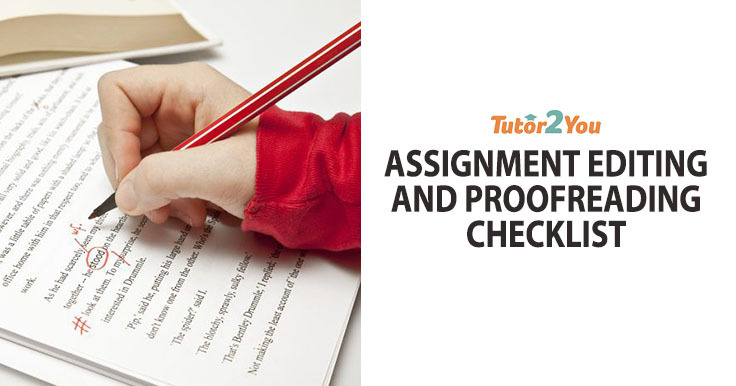
Assignment Editing and Proofreading Checklist
At this stage of the term, many students are undoubtedly working through this terms assignments. There are a number of opportunities for parents to help support their children through this process.
It consists of four main stages: researching, drafting, editing and proofreading. Here are some tips to help you assist your child in editing and proofreading tasks.
1. Have a break before the final review
Ideally, your child should have a day or two’s break. It’s important to put the assignment aside for a while because our eyes and minds need a rest before the final check-up.
2. Read the assignment again
It’s important to go back to the assignment on the final stage of the writing to make sure your child clearly understood the guidelines and accomplished all the requirements.
3. Read the assignment out aloud
Sometimes our eyes won’t see the mistakes that our ears can “catch”. Ask your child to read the written text aloud or do it yourself. By reading aloud, we perceive the same text in a different way and find mistakes we never noticed during multiple re-readings.
4. Time for grammar and spelling
While pre-drafting and drafting, we don’t usually worry too much about grammar, punctuation and spelling issues. Proofreading, however, deals with the very close check-up, when you look for any possible typos and grammar mistakes. Note that for secondary school children, it’s better to avoid using MS Word’s spelling and grammar checker, (Grammarly is quite a good alternative) let them find mistakes themselves.
Proofread checklist and checked boxes next to the words spelling, grammar and accuracy as the things an editor reviews in an essay, article or report
5. Print out the paper
It’s much easier to find mistakes when you read a hard copy, your eyes are relaxed and the tension of reading on a computer screen is reduced.
Conclusion
The process of editing and proofreading will become much easier if you practice and work with your child. Make sure to consider the specific task and criteria of each assignment as young students often misinterpret these.
Get One-On-One Support
If your child could use help with a specific subject or you would like one of our certified tutors to work through these checklist and more to ensure a productive and successful new term, call and speak to one of our consultants today on 1300 4200 79 or click here and fill in the form and your regional manager will be in touch.


